This resurgence of the disease comes at a time when four of the six cholera treatment centers in the Western Department are located in areas controlled by gangs
A man pours chlorine, dose after dose, into the buckets of residents who have come to collect water from the community reservoir in the locality of Diègue on this Monday in October.
In this neighborhood of Pétion-Ville, where Lucson has been working for five months disinfecting water on behalf of an NGO, anxiety is visible on residents’ faces following the identification of several dozen suspected cholera cases between September and October.
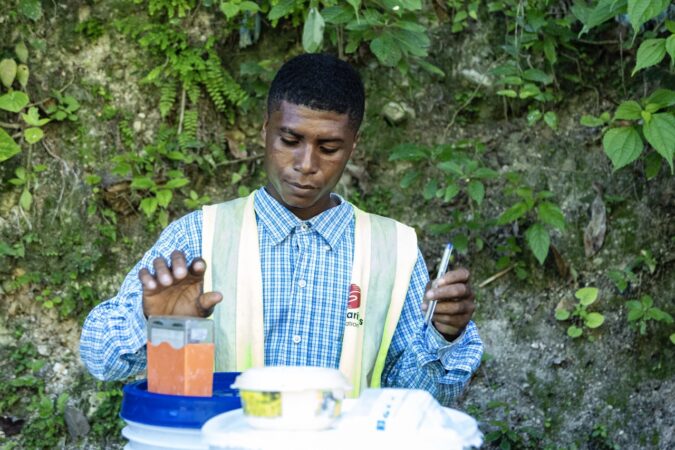
Field agent Lucson pours chlorine into the buckets of residents who come to fetch water from the community reservoir. Photos: Jean Feguens Regala for AyiboPost. October 2025.
According to partial data from the Western Health Directorate, 287 suspected cases of the bacterium were recorded between September 7 and October 21, 2025, in the neighborhoods of Pèlerin 5, Bristou, Bobin, Peguy-Ville, Diègue, Nerette, Girardo, Jalousie, and along Route de Frères.
These numbers are likely to rise with the passing of Hurricane Melissa.
New cholera cases are being reported in Port-au-Prince at a time when four out of six treatment centers in the Western Department are in areas controlled by gangs, and many neighborhoods in the capital still face serious sanitation and hygiene problems.
In April 2025, dozens of cholera cases were reported in camps for displaced people in the metropolitan area.
On October 14, 2025, AyiboPost visited Diègue, about three kilometers from Pétion-Ville, where nearly a dozen cases had been confirmed.
Around the community reservoir where Lucson disinfects water for residents, about fifteen people wait their turn, holding jugs and buckets.
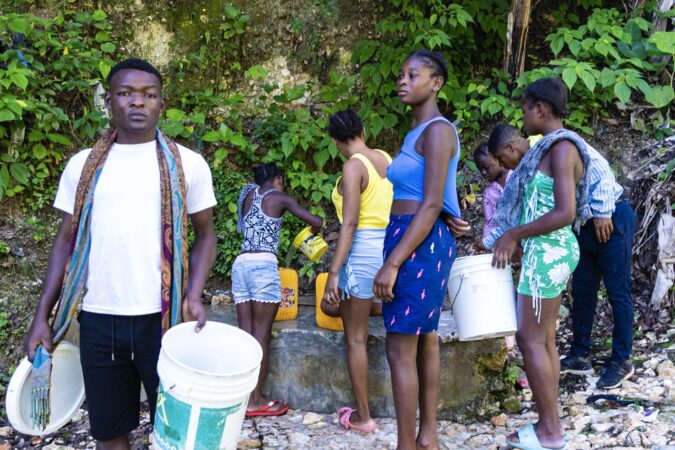
People fill their containers at the spring catchment. Photo: Jean Feguens Regala for AyiboPost. October 2025.
A bit farther away, an elderly woman, visibly weakened, is sitting directly on the ground with her hands covering her face. She says she hasn’t slept all night due to persistent discomfort and symptoms associated with cholera. Her voice is faint, almost inaudible.
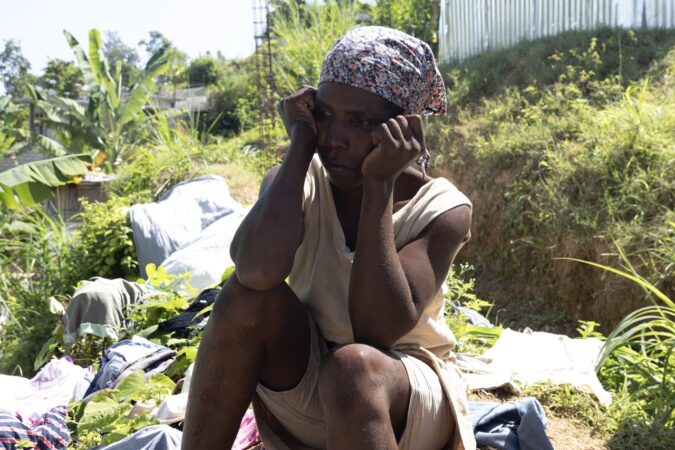
A woman sits with a pale face. She says she has experienced cholera symptoms. Photos: Jean Feguens Regala for AyiboPost. October 2025.
Residents denounce what they describe as the poor management of the reservoir, saying the water quality is unsafe.
“The water isn’t properly captured. The only supply we have in the area comes directly from the spring. When the ravine where that spring is located gets polluted, the water we collect in the reservoir becomes contaminated too,” explains Duvert Jean Lefabre, a resident who has lived in the area for a year.
Displaced from Carrefour-Feuilles because of gang violence, he settled here, trying to rebuild his life as best he can.
Located on the hillside, the neighborhood of Diègue developed chaotically, with makeshift homes built on small plots of land.
Residents have no formal infrastructure for water treatment, and hygiene conditions remain alarming.
Several locals say they have noticed an increase in people showing symptoms similar to cholera.
Most explain that they draw their water from the community reservoir in the area or directly from the nearby spring for their daily consumption.
“We weren’t used to seeing this kind of illness around here. It came all of a sudden, and since then, it’s been wreaking havoc,” says Rodrigue Val, a father who has been living in Diègue for the past five years.
Val had just left a neighborhood health center after several days of hospitalization due to cholera. Still weak, he says he hasn’t fully recovered.
Today, he lives with his family under a tent and has dug a makeshift pit himself for their needs.
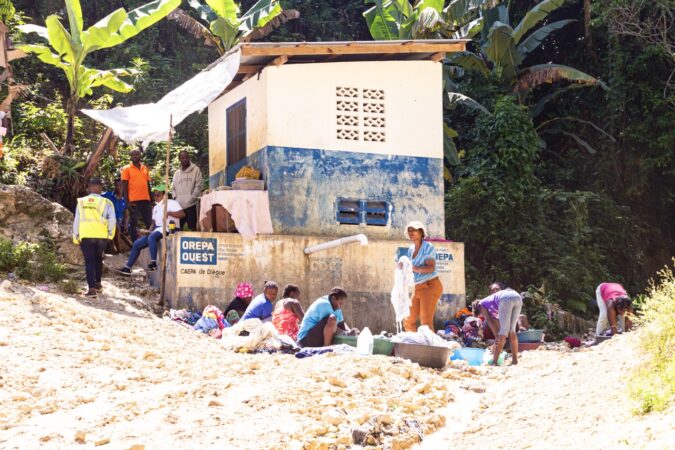
The reservoir where the water used by residents is collected. Photos: Jean Feguens Regala for AyiboPost. October 2025.
Lefabre, a mason and local resident interviewed by AyiboPost, explains that many people in the area fled their neighborhoods because of gang violence.
Most of them now live in precarious conditions, with no basic infrastructure.
According to Lefabre, the majority of families don’t have toilets and must improvise to get by. “The latrines are built haphazardly, with whatever materials people can find,” he says.
Dieudonné Léclerc, another resident, fled Kenscoff eight months ago under gang threats and settled in Diègue with his five relatives.
“When the bandits drove us out, we had to look for a place to stay. The locals pointed us to a plot of land, and that’s where we built our shelter,” he recounts.
Contacted by AyiboPost, Dr. Valery Paul, head of the Statistics and Epidemiology Department at the Western Health Directorate (DSO), says the epicenter of this new cholera outbreak is in Bristou, about 1.4 kilometers from downtown Pétion-Ville.
Between September 7 and October 19, nearly fifty suspected cases were recorded there.
The spread then reached Diègue, where 85 suspected cases were reported, Dr. Paul continues.
The main factor, according to him, is the contamination of the water source used by residents.
“Among the three water sources in the area, the most frequented one is located downhill from an area where latrines were built, which facilitated the spread of the disease,” he explains.
Since the reappearance of cholera in 2022, after three years in which the disease had been declared eradicated in humans, outbreaks have continued to occur regularly in various parts of the country.
In May 2023, several localities of Pétion-Ville — notably Jalousie and Tèt Dlo — had already recorded 1,644 suspected cases, according to data from the Western Health Directorate of the Ministry of Public Health and Population (MSPP).
Dr. Paul reports that between September and October, six deaths occurred in health facilities and eleven others at the community level.
“In the current context of sociopolitical instability, the elimination of cholera won’t happen anytime soon,” Dr. Valery Paul told AyiboPost, adding that during the last two weeks, alerts have decreased compared to the peak observed in September in the previously mentioned neighborhoods of Pétion-Ville.
However, the doctor urges caution: the decline in cases does not mean the disease has disappeared.
According to him, medical treatment, improvements in sanitation and hygiene infrastructure, community engagement and education, epidemiological surveillance, and vaccination are the main complementary strategies in the fight against cholera in the country.
These measures require close collaboration between local and international institutions.
“In the coming days, the MSPP plans to launch a vaccination campaign to strengthen efforts against the disease,” Dr. Paul notes, emphasizing that despite the outbreaks, the ministry remains committed to limiting cholera’s spread.
Although authorities report fewer recent alerts, vigilance remains essential.
“The trend is irregular,” Dr. Paul concludes. “Cholera outbreaks occur mainly during the rainy season — between September and November — when sanitary conditions deteriorate further,” he told AyiboPost.
By: Jean Feguens Regala et Lucnise Duquereste
Cover photo | A man washes his container in the riverbed before filling it. Photos: Jean Feguens Regala for AyiboPost. October 2025.
► AyiboPost is dedicated to providing accurate information. If you notice any mistake or error, please inform us at the following address : hey@ayibopost.com
Keep in touch with AyiboPost via:
► Our channel Telegram : Click here
►Notre Channel WhatsApp : Click here
►Our Community WhatsApp : Click here

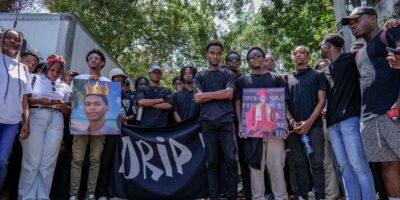
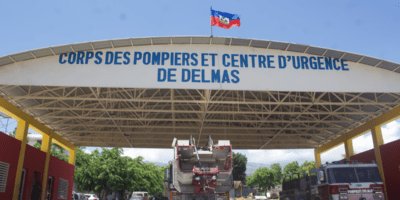
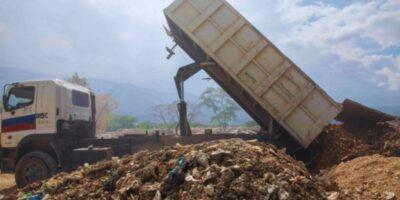
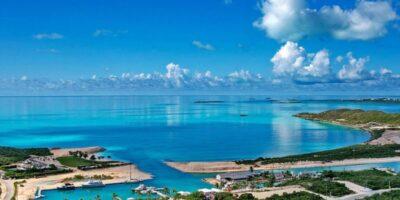
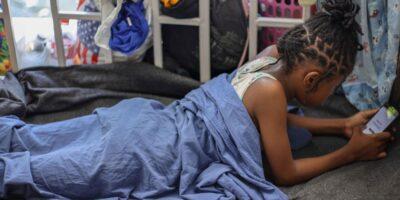

Comments